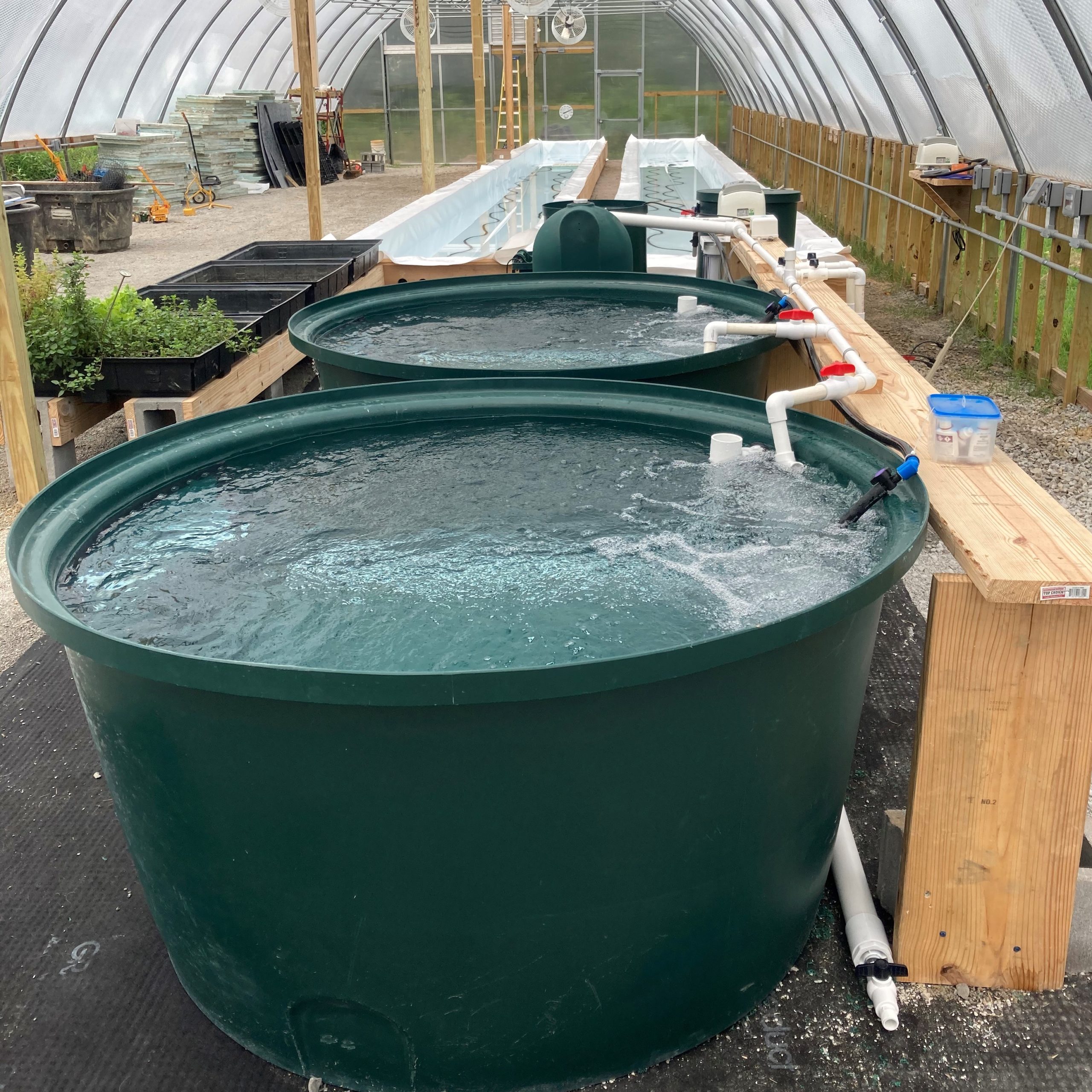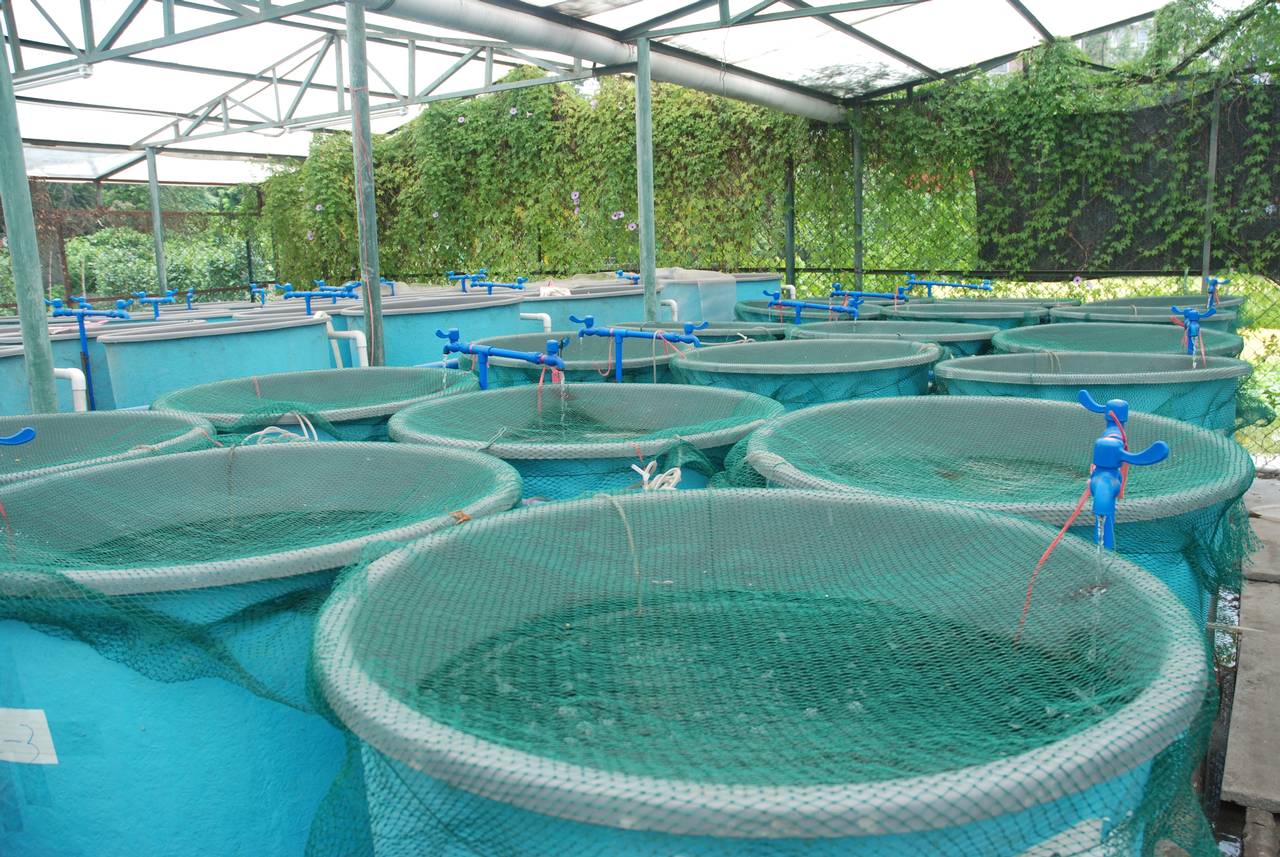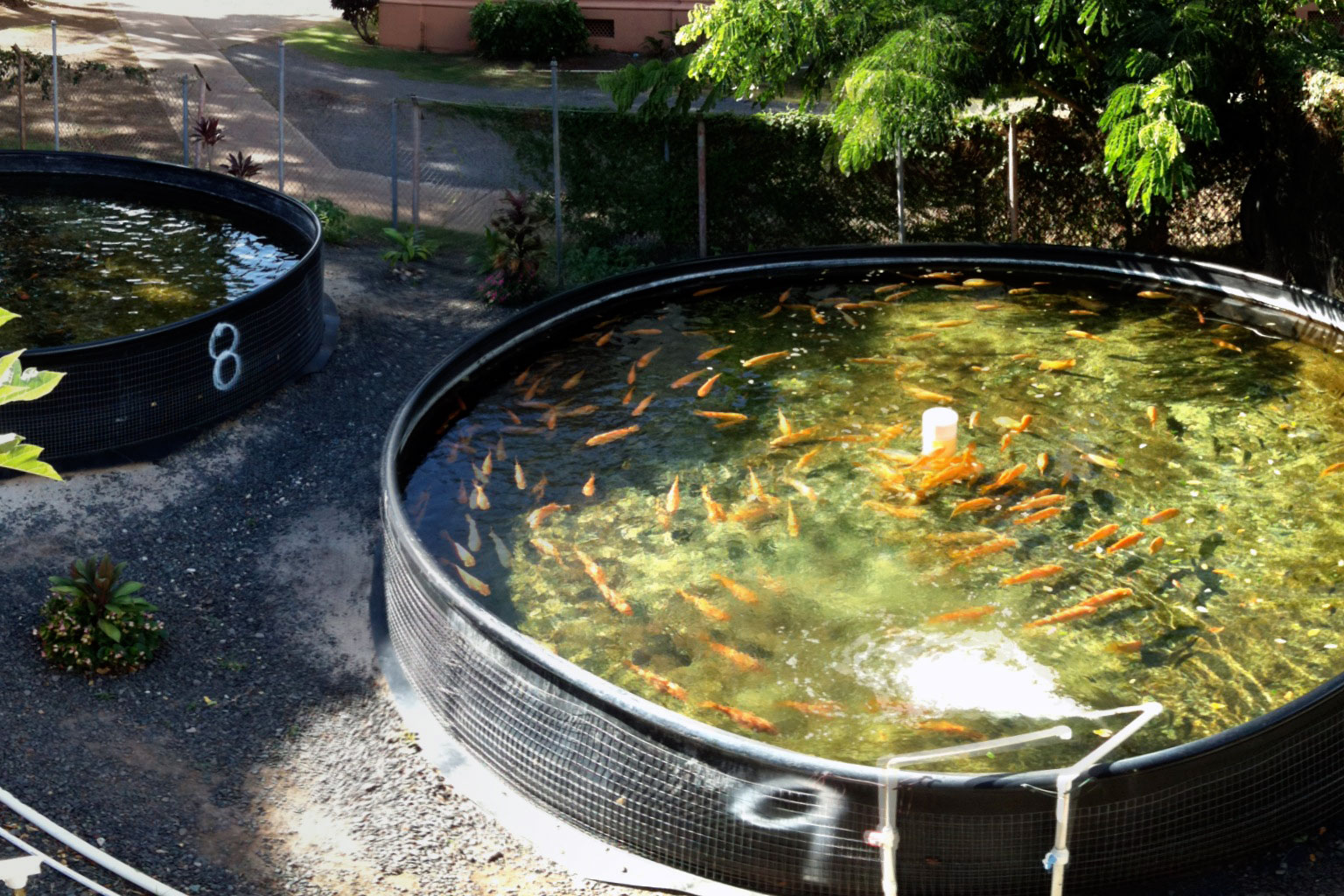Home aquaculture systems, the practice of raising fish and seafood in controlled environments, offer a sustainable and cost-effective way to enjoy fresh, nutritious seafood. From small-scale setups to larger systems, home aquaculture provides numerous benefits, making it an attractive option for individuals and families looking to reduce their environmental impact while enjoying the fruits of their labor.
This comprehensive guide will delve into the fascinating world of home aquaculture systems, exploring their benefits, types, components, and maintenance requirements. We’ll also discuss advanced techniques and innovations that can help you optimize fish growth and health, ensuring a successful and rewarding home aquaculture experience.
Definition and Overview: Home Aquaculture Systems
/GettyImages-142873284-7afec7706c2a4997841bde2792c7ff6b.jpg)
Home aquaculture systems are designed to raise aquatic organisms, such as fish, shellfish, or plants, in a controlled environment within the confines of a home or small-scale setting.
These systems typically involve the use of tanks, aquariums, or other containers to create a controlled environment that mimics the natural habitat of the aquatic organisms being raised.
Common Home Aquaculture Systems
There are various types of home aquaculture systems, each with its own advantages and disadvantages. Some common systems include:
- Aquaponics: This system combines aquaculture (raising fish) with hydroponics (growing plants in water) to create a mutually beneficial ecosystem.
- Recirculating Aquaculture Systems (RAS): These systems reuse water by filtering and treating it, reducing water consumption and waste discharge.
- Aquariums: These are typically used for ornamental purposes or to keep small aquatic organisms, such as fish or invertebrates.
Benefits of Home Aquaculture Systems

Home aquaculture systems offer numerous advantages, ranging from nutritional benefits to cost-effectiveness and environmental sustainability.
Nutritional Value
Home-grown fish and seafood are an excellent source of essential nutrients, including:
- Protein:High-quality protein, essential for growth and repair.
- Omega-3 fatty acids:Essential for heart, brain, and eye health.
- Vitamins and minerals:Including vitamins A, D, and B12, as well as minerals such as iron, zinc, and calcium.
Cost-Effectiveness
Compared to purchasing fish and seafood from stores, home aquaculture systems can significantly reduce costs. By raising your own fish, you eliminate transportation, processing, and storage expenses, which can account for a large portion of the price.
Environmental Benefits
Home aquaculture systems contribute to environmental sustainability by:
- Reducing carbon footprint:Home-grown fish have a lower carbon footprint than commercially produced fish, as they require less transportation and energy input.
- Water conservation:Recirculating aquaculture systems (RAS) use less water than traditional fish farming methods, conserving valuable water resources.
- Waste reduction:Home aquaculture systems can utilize waste products from other household activities, such as food scraps and aquaponics, reducing waste and promoting resource efficiency.
Types of Home Aquaculture Systems
Selecting the right home aquaculture system depends on factors such as space, budget, and fish species. Here’s a table outlining different types of home aquaculture systems:
| System | Size | Water Capacity | Fish Species Compatibility | Maintenance Requirements | Illustration |
|---|---|---|---|---|---|
| Aquaponics | Varies | Up to several thousand gallons | Wide variety, including tilapia, catfish, and koi | Moderate to high |  |
| Recirculating Aquaculture System (RAS) | Varies | Hundreds to thousands of gallons | Species requiring specific water parameters, such as salmon or trout | High |  |
| Vertical Aquaculture | Small to medium | 几十 to hundreds of gallons | Species tolerant of higher densities, such as goldfish or bettas | Moderate |  |
| Container-Based Aquaculture | Small | Up to several hundred gallons | Small species, such as minnows or crayfish | Low to moderate |  |
| Aquarium-Based Aquaculture | Small to medium | 几十 to hundreds of gallons | Species suitable for aquarium environments, such as tropical fish or invertebrates | Moderate to high |  |
Components of Home Aquaculture Systems
Building a functional home aquaculture system requires several essential components, each playing a crucial role in maintaining a healthy and thriving aquatic environment for your fish or other aquatic organisms.
The primary components of a home aquaculture system include:
Filtration
- Mechanical filtration:Removes solid waste particles, such as fish waste and uneaten food, through mechanical means like filters or screens.
- Biological filtration:Utilizes beneficial bacteria to break down toxic ammonia and nitrite into less harmful nitrate, maintaining water quality.
Aeration
- Air pump:Provides oxygen to the water, which is essential for fish respiration and overall water quality.
- Airstones:Diffuse air into the water, increasing oxygen levels and creating water movement.
Lighting
- Artificial lighting:Provides a controlled light cycle for fish, simulating natural sunlight and regulating their growth, feeding, and reproduction.
Feeding Systems
- Automatic feeders:Dispense fish food at scheduled times, ensuring consistent feeding and reducing overfeeding.
Water Quality Monitoring
- Test kits:Measure water parameters such as pH, ammonia, nitrite, and nitrate, allowing you to monitor water quality and make necessary adjustments.
Maintaining optimal water quality is crucial for the health and well-being of your aquatic organisms. Regular water changes, monitoring water parameters, and utilizing appropriate filtration and aeration systems help ensure a clean and healthy environment for your fish or other aquatic species.
Fish Species for Home Aquaculture Systems

When selecting fish species for your home aquaculture system, consider factors such as their growth rate, size, temperature requirements, and feeding habits. The following table provides a summary of suitable fish species for home aquaculture:
| Species | Growth Rate | Size | Temperature Requirements (°C) | Feeding Habits |
|---|---|---|---|---|
| Tilapia | Fast | Up to 1 kg | 25-30 | Omnivorous |
| Catfish | Moderate | Up to 2 kg | 22-28 | Carnivorous |
| Goldfish | Slow | Up to 30 cm | 10-25 | Omnivorous |
| Guppies | Fast | Up to 5 cm | 22-28 | Omnivorous |
| Betta Fish | Slow | Up to 5 cm | 22-28 | Carnivorous |
Factors to Consider When Choosing Fish Species
*
-*Growth Rate
The growth rate of the fish species will determine how quickly you can harvest them.
Home aquaculture systems are becoming increasingly popular as people look for ways to produce their own food. One of the most popular types of home aquaculture systems is aquaponics, which combines fish farming with plant cultivation. Nelson Pade Aquaponics is a leading provider of aquaponics equipment and training, and they offer a wide range of resources for those who are interested in starting their own aquaponics system.
Home aquaculture systems can be a great way to provide fresh, healthy food for your family and friends, and they can also be a fun and rewarding hobby.
-
-*Size
The size of the fish species will determine the size of your tank or pond.
-*Temperature Requirements
The temperature requirements of the fish species will determine the type of heating or cooling system you need.
-*Feeding Habits
The feeding habits of the fish species will determine the type of food you need to provide.
Maintenance and Troubleshooting
Maintaining a home aquaculture system is crucial for ensuring the well-being of your aquatic inhabitants and the overall health of the ecosystem. Here’s a comprehensive guide to help you maintain and troubleshoot your system effectively:
Water Changes, Home aquaculture systems
Regular water changes are essential to remove waste products, maintain water quality, and prevent disease outbreaks. Here’s how to perform water changes:
- Test your water parameters to determine the frequency of water changes.
- Siphon or drain 10-25% of the tank water, being careful not to disturb the substrate or fish.
- Replace the removed water with fresh, aged, or dechlorinated water that is at the same temperature as the tank water.
- Monitor the water parameters after the water change to ensure they are within the optimal range.
Feeding
Proper feeding is crucial for the health and growth of your fish. Follow these guidelines:
- Feed your fish a balanced diet that meets their nutritional needs.
- Feed your fish at regular intervals, typically once or twice a day.
- Avoid overfeeding, as it can lead to water quality issues and health problems.
- Observe your fish’s feeding behavior and adjust the amount of food accordingly.
Equipment Cleaning
Regular cleaning of equipment is essential to prevent equipment failure and maintain water quality. Here’s how to clean equipment:
- Clean filters regularly to remove debris and prevent clogging.
- Inspect and clean pumps, heaters, and other equipment as per the manufacturer’s instructions.
- Use a mild cleaning solution and rinse thoroughly to remove any residue.
- Never use harsh chemicals or detergents, as they can harm your fish.
Common Problems and Troubleshooting Tips
Here are some common problems that may arise in home aquaculture systems, along with troubleshooting tips:
| Problem | Troubleshooting Tips |
|---|---|
| High ammonia or nitrite levels | Perform water changes, clean the filter, and reduce feeding. |
| Low oxygen levels | Increase aeration, check the filter, and reduce the number of fish. |
| Fish diseases | Identify the disease, quarantine affected fish, and treat with appropriate medication. |
| Equipment failure | Inspect the equipment, clean it, and replace any faulty parts. |
| Algae growth | Reduce lighting, clean the tank, and add algae-eating organisms. |
By following these maintenance and troubleshooting guidelines, you can ensure that your home aquaculture system remains healthy and thriving.
Advanced Techniques and Innovations

To optimize fish growth and health in home aquaculture systems, consider implementing advanced techniques and embracing innovative technologies. These methods enhance efficiency, reduce maintenance, and improve overall system performance.
Innovations in home aquaculture systems, such as automation and remote monitoring, provide greater control and convenience. Explore these advancements to streamline your operations and stay informed about your system’s status.
Advanced Techniques for Fish Growth and Health
- Water Quality Management:Implement advanced filtration systems, such as biofilters and UV sterilizers, to maintain optimal water conditions for fish health.
- Controlled Feeding:Utilize automated feeders or smart feeding devices to ensure precise and consistent feeding schedules, optimizing fish growth and feed efficiency.
- Disease Prevention and Treatment:Establish a comprehensive health management program that includes regular disease monitoring, early detection, and appropriate treatments to minimize fish losses.
- Environmental Enrichment:Provide enrichment devices such as hiding places, plants, and water flow variations to stimulate natural behaviors and reduce stress in fish.
Innovations in Home Aquaculture Systems
- Automation:Automate tasks such as feeding, water quality monitoring, and temperature control using programmable controllers or smartphone apps.
- Remote Monitoring:Utilize remote monitoring systems to track system parameters, receive alerts, and make adjustments remotely, ensuring timely intervention.
- Smart Lighting:Implement smart lighting systems to simulate natural day-night cycles, enhancing fish growth and well-being.
Resources for Further Learning and Research
- University of Minnesota Extension: Home-Based Aquaculture
- Aquaculture Alliance: Home-Based Aquaculture: Getting Started
- Texas A&M AgriLife Extension: Aquaculture Publications
Closing Summary
Embarking on a home aquaculture journey can be an incredibly rewarding experience, providing fresh, sustainable seafood while fostering a deeper connection with nature. By embracing the principles of responsible aquaculture and utilizing advanced techniques, you can create a thriving ecosystem that supports healthy fish populations and contributes to a more sustainable food system.
Whether you’re a seasoned aquarist or just starting your home aquaculture adventure, this guide will empower you with the knowledge and skills to achieve success.
Detailed FAQs
How much space do I need for a home aquaculture system?
The space requirements for a home aquaculture system vary depending on the type of system and the number of fish you plan to raise. However, even small-scale systems can be accommodated in limited spaces, such as balconies or spare rooms.
What are the best fish species for home aquaculture?
Choosing the right fish species for your home aquaculture system is crucial. Factors to consider include growth rate, size, temperature requirements, and feeding habits. Some popular choices for beginners include tilapia, catfish, and rainbow trout.
How often do I need to clean my home aquaculture system?
Regular maintenance is essential for the health of your fish and the overall success of your home aquaculture system. The frequency of cleaning will vary depending on the type of system, but it’s generally recommended to perform partial water changes and clean equipment weekly or bi-weekly.
/GettyImages-142873284-7afec7706c2a4997841bde2792c7ff6b.jpg?w=1920&resize=1920,1344&ssl=1)